CMS will implement a new Rural Emergency Hospital provider type on Jan. 1. REHs will be able to provide certain outpatient hospital services including emergency department and observation services. CAHs and small rural acute care hospitals with no more than 50 beds are eligible to enroll as REHs under Medicare if they meet certain criteria. If you're considering converting a rural hospital or Critical Access Hospital to an REH, you can submit your application . You can also learn more about becoming an REH Medicare provider . REHs will be paid under the Medicare Outpatient Prospective Payment System payment rates, plus 5.0%. CMS will also include a fixed monthly payment, based on the excess of the total amount paid to all CAHs in 2019 over the estimated total amount that would have been paid to CAHs in 2019 if payment were made for inpatient, outpatient and skilled nursing facility services under the PPS. In the future, the monthly payment will be based on 2023 data, increase...
